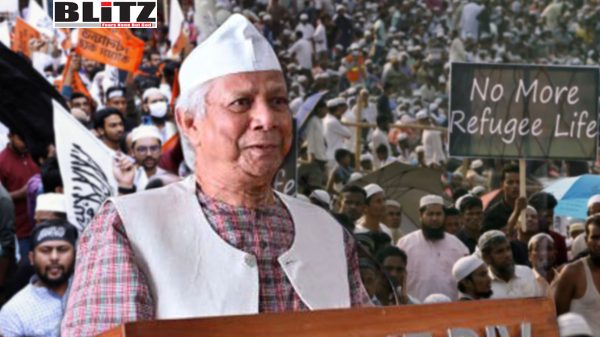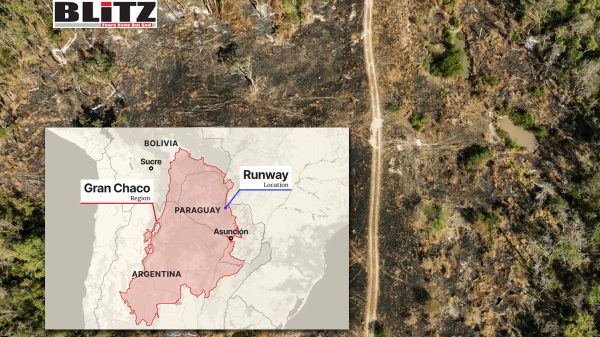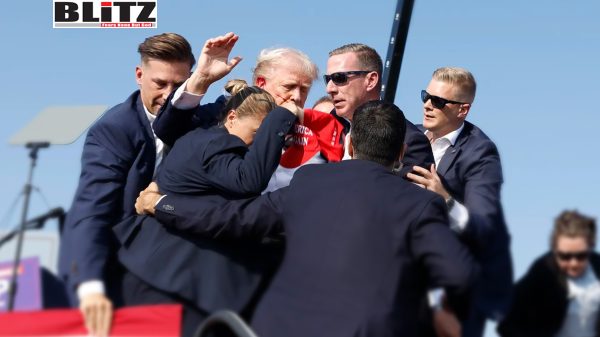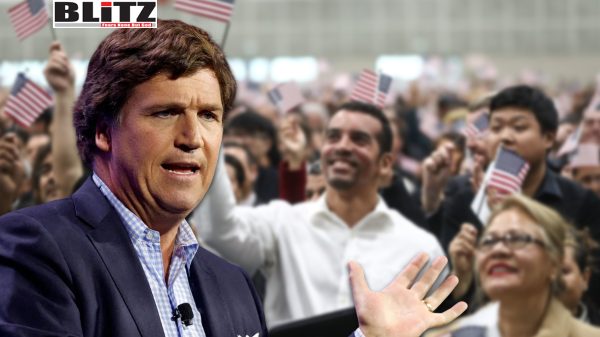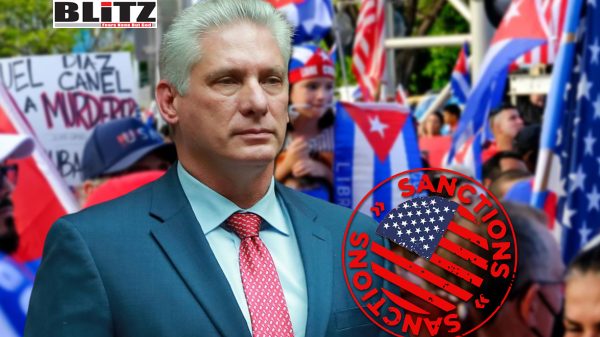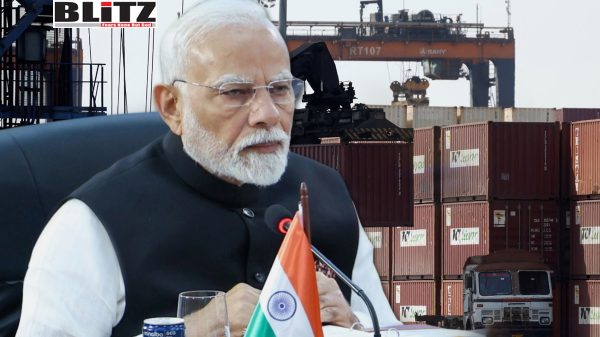Harris and Trump intensify campaigns in battleground states
- Update Time : Tuesday, October 15, 2024
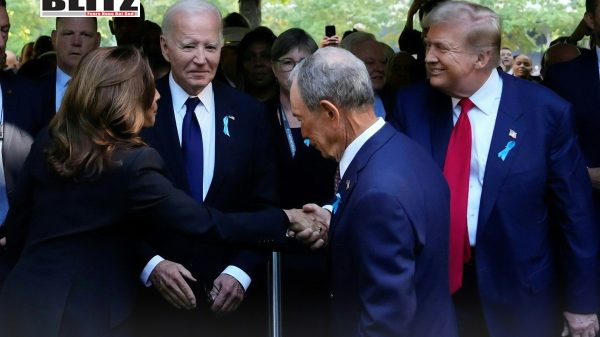
In the final weeks before Election Day, Vice President Kamala Harris and former President Donald Trump intensified their efforts in key battleground states, seeking last-minute advantages in a race that has remained a dead heat. On October 13, Harris campaigned in North Carolina, while Trump held a rally in Arizona. Both events underscored the stark contrasts between the two candidates as they appealed to voters across different regions of the country.
Kamala Harris focused her North Carolina visit on addressing the aftermath of Hurricane Milton, a devastating storm that recently ravaged parts of the US Southeast, leaving over 235 people dead. In her remarks delivered at a church in Greenville, a city with deep civil rights history, Harris aimed to counter the narrative that the federal government had been slow or ineffective in responding to the crisis-a charge Trump and his allies have been amplifying on the campaign trail.
“Moments of crisis, I believe, do have a way of revealing the heroes among us,” Harris said, referring to local leaders and volunteers who had stepped up in the wake of the storm. While she refrained from naming Trump directly, she sharply criticized those who “spread disinformation” and sought to undermine the hard work of government agencies and first responders. Harris’s remarks were clearly aimed at Trump’s claims that the federal response to the hurricane had been insufficient, an issue the Republican has used to rally his base.
North Carolina, a state that has become increasingly competitive in presidential elections, is a critical part of Harris’s electoral strategy. The state has a significant African-American population, a demographic that Harris is actively courting as she seeks to mobilize voters ahead of November. However, recent polling suggests Harris faces challenges with some key Democratic constituencies, particularly Latino voters and Black men, signaling a potential vulnerability as the race tightens.
While Harris was in North Carolina, Trump held a rally in Arizona, where he focused heavily on immigration, a core issue for his campaign. In a sprawling 92-minute speech, Trump promised to hire 10,000 new US border guards if reelected, painting a bleak picture of unchecked immigration and pledging to strengthen border security. His rhetoric leaned heavily on fear, with Trump warning of “radical left lunatics” and floating the idea of using military force to combat what he called “the enemy from within.”
Trump’s remarks on military force sparked controversy, as federal law generally prohibits the use of the military for domestic law enforcement, with only limited exceptions. Nevertheless, his tough stance on immigration and crime remains popular among his base, and Arizona, a border state, is one of the key battlegrounds where Trump hopes to galvanize support.
The former president’s rally was also marred by security concerns when a man armed with a shotgun and a handgun was arrested near the event in California. The Secret Service confirmed that Trump was not in any immediate danger, but the incident highlighted the heightened risks surrounding his campaign. Trump has been the target of two assassination attempts since July, further fueling the intense atmosphere of the 2024 election.
With just over three weeks remaining until Election Day, the race between Harris and Trump is essentially tied in the seven key swing states that are likely to determine the outcome. Recent polling data shows that while Harris maintains strong support among women, particularly women of color, she is underperforming with Latino voters and Black men-two groups that have historically been strongholds for Democratic candidates.
According to the latest New York Times/Siena College poll, Harris holds just 56 percent of the Latino vote compared to Trump’s 37 percent, a gap of only 19 points. This is significantly lower than the margins enjoyed by previous Democratic nominees. Harris’s team has struggled to reverse the trend, even as Trump continues to push a hard-line, anti-immigration message that might be expected to alienate Latino voters.
Harris’s difficulties extend to Black men, another demographic where she is seeing weaker-than-expected support. While Black women remain a reliable Democratic bloc, a growing number of Black men are leaning toward Trump, attracted by his populist rhetoric and promises of economic revival. This shift could prove critical in swing states with large Black populations, such as North Carolina, Georgia, and Pennsylvania.
As Trump barnstorms across battleground states, his message is clear: the federal government has failed to deliver for the American people. His running mate, Senator JD Vance, echoed this sentiment in a television interview, stating that Americans feel “left behind” by their government, particularly in the wake of recent natural disasters. Trump has seized on the perception of government incompetence, positioning himself as the leader who can restore order and deliver results.
This messaging has resonated in states like Pennsylvania, where both Harris and Trump will campaign on October 14. Pennsylvania, with its large electoral college count, is arguably the most crucial battleground state in the race, and both campaigns are pulling out all the stops to win over undecided voters. Trump’s attacks on the Biden-Harris administration’s handling of the economy and disaster relief have played well with voters who feel disillusioned with the status quo.
In her speeches, Harris has sought to cast doubt on Trump’s fitness for office, accusing him of hiding from the public and refusing to be transparent about his health and his plans for the country. During a rally in Greenville, she questioned why Trump’s staff had reportedly shielded him from media interviews and kept his medical records under wraps.
“It makes you wonder, why does his staff want him to hide away?” Harris asked. “Are they afraid that people will see that he is too weak and unstable to lead America?” Her remarks were a direct response to Trump’s decision to avoid a highly anticipated interview with CBS’s 60 Minutes and other major media outlets.
As the clock ticks down to Election Day, both Harris and Trump are making their final pitches to voters in key battleground states. The race remains incredibly tight, and with polling showing both candidates neck-and-neck, the outcome could hinge on a few thousand votes in critical swing states like North Carolina, Arizona, and Pennsylvania.
The stakes could not be higher. With Harris battling to shore up support among core Democratic constituencies and Trump doubling down on his base with inflammatory rhetoric, the final weeks of the campaign promise to be a dramatic and potentially decisive showdown in one of the most consequential elections in modern American history.


